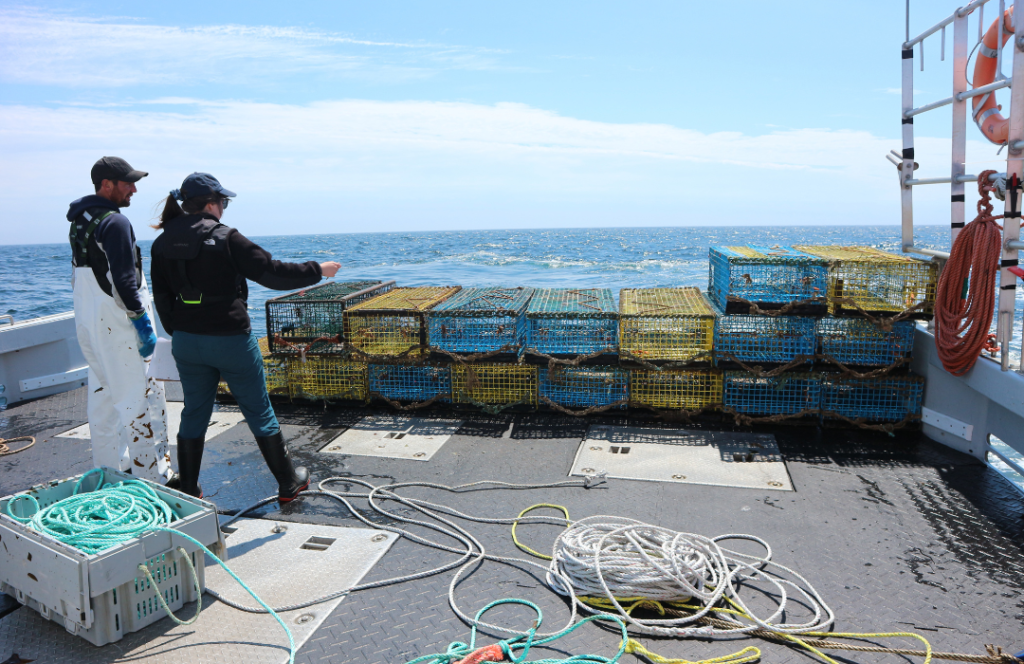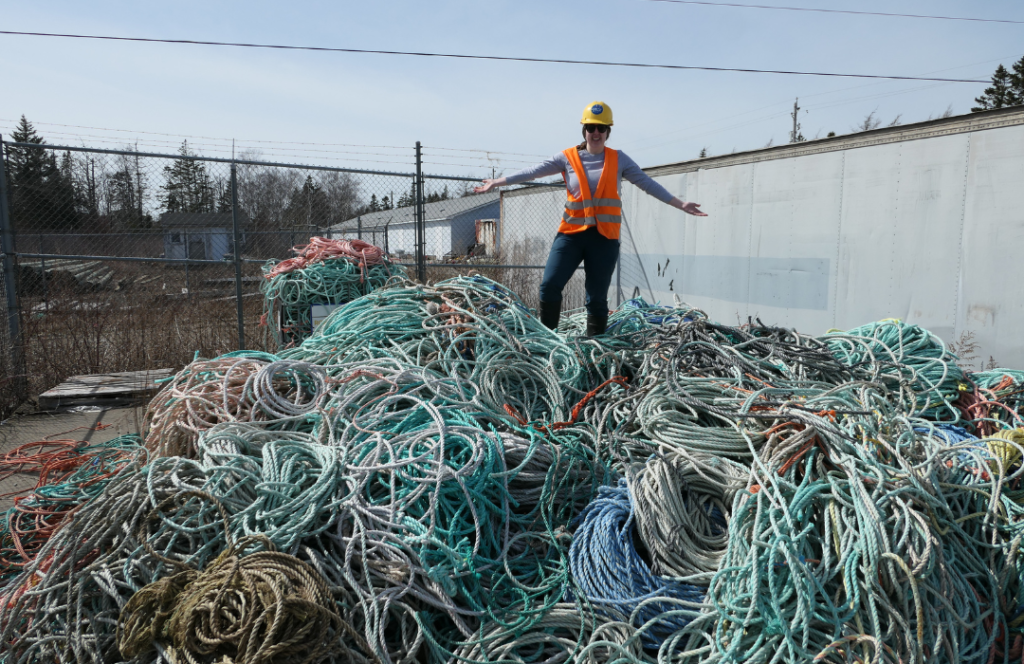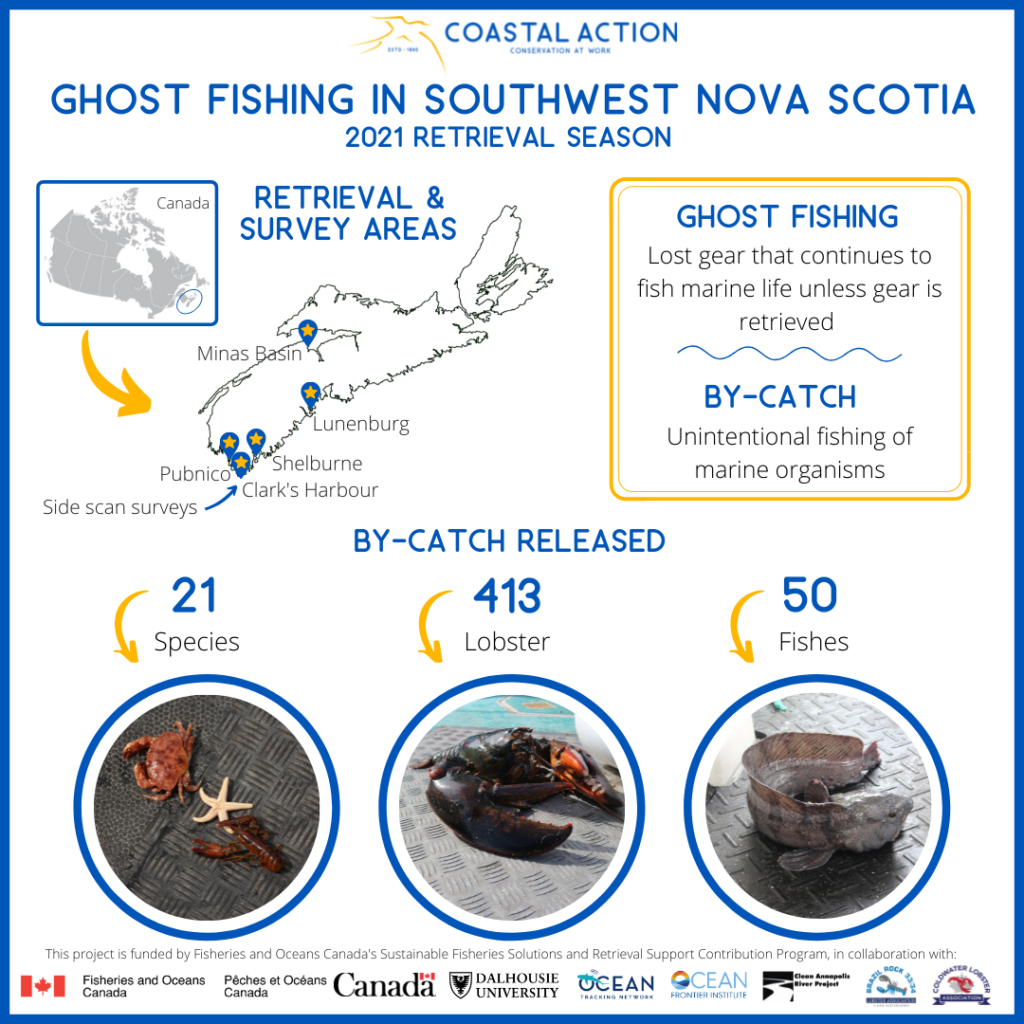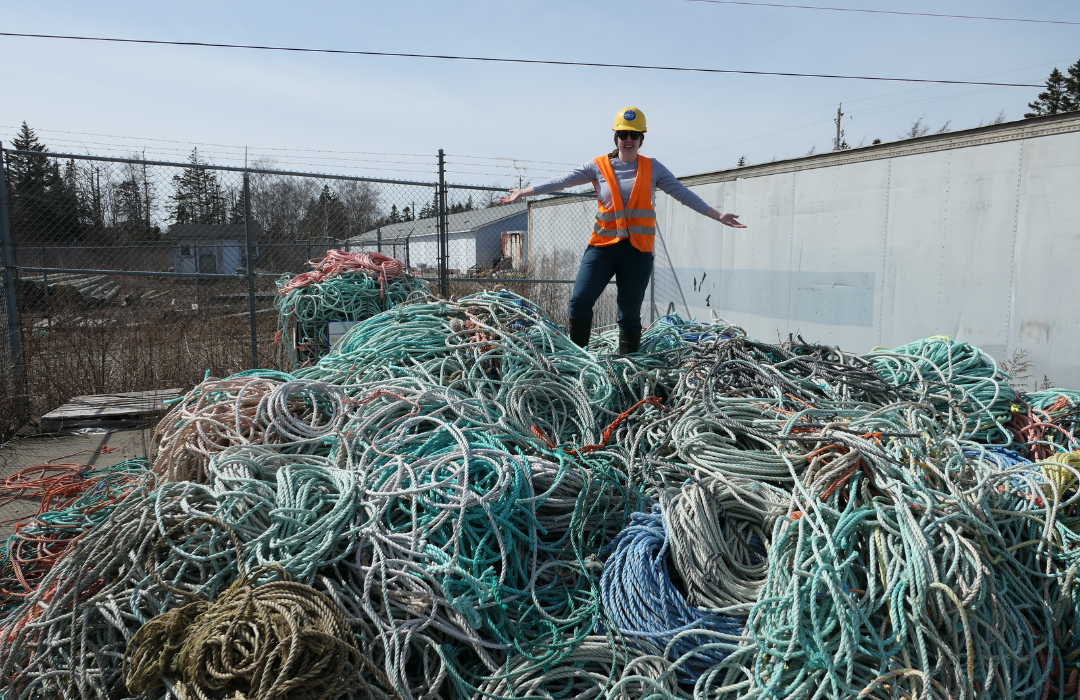The ocean is a strong and mysterious place that doesn’t adhere to anthropogenic guidelines. On account of the ocean’s energy, together with human error, the ocean has change into haunted by ghosts. These ghosts stay within the depths of the ocean and float on the floor, trapping and entangling marine species on a worldwide scale, and threatening the long-term well being and habitat of ocean creatures.
“Ghost gear”, also called deserted, misplaced, and discarded fishing gear (ALDFG) makes up roughly 58% of macro marine particles by weight and harms each the surroundings and the financial system. There are numerous methods fishing gear can find yourself in marine environments, reminiscent of by means of storm occasions, gear conflicts, and unlawful dumping, which makes ghost gear tough to deal with and forestall. As soon as ghost gear enters the water, it may well degrade habitat, entangle species, lower catches for the trade, trigger vessel injury, and pose at-sea security hazards.
As our world oceans are shared and cross worldwide borders, gear can be misplaced on the ocean ground as a result of points with different industries. These sources of ghost gear usually work concurrently, rising the quantity of ghost gear within the marine surroundings and inflicting detrimental financial and environmental impacts.
How does ghost fishing impression the ocean?
The time period ‘ghost fishing’ describes how gear, particularly intact pots or traps, can proceed to ‘fish’ ocean species lengthy after the gear has been misplaced or deserted, each on the ocean’s floor and on the seafloor. By-catch is the time period used to outline the species caught indiscriminately by means of ghost fishing. Ghost fishing can happen when fish and marine species are caught in traps, ultimately dying and attracting prey, and inevitably repeating the cycle. As traps and heavier particles fall to the ocean ground it additionally impacts the benthic marine habitat (on the ground of the ocean). Ocean currents can transfer and disrupt gear throughout seafloor habitats, damaging fragile ecosystems. Though there have been arguments made for traps appearing as long-term habitat for species, research present that gear causes extra hurt, significantly within the first roughly 5 years, by catching and killing species by means of the ghost fishing cycle. Bigger species, such because the North Atlantic Proper Whale, are additionally threatened by the presence of ghost gear in marine environments, mostly by rope and internet entanglements.

Marine life on the finish of their rope
In Atlantic Canada, the commonest particles discovered alongside shorelines are rope, traps, lobster bands, and nets. Rope, used onboard lobster fishing vessels, is often made from polypropylene that wears down over time. As soon as fishers can now not use rope of their operations, it usually leads to landfills or harbours. The rope that leads to coastal and marine environments degrades over time and creates microplastic fragments. These plastic particles can then be ingested by marine species, inflicting bodily and chemical impacts over time. There are, nonetheless, many efforts from fishers and group members to repurpose this rope for issues reminiscent of artisan crafts, and most just lately, the communities throughout Atlantic Canada have been working to recycle end-of-life rope.

How does ghost gear have an effect on the fishing trade?
Ghost gear can negatively have an effect on the fishing financial system, which has implications for the livelihoods of many communities, and the nation as an entire. That is all of the extra troubling contemplating that marine fisheries manufacturing and industrial landings had been valued because the most worthwhile sector inside Canada’s fishing trade. In Atlantic Canada, the outstanding fishing trade is lobster, which contributes considerably to the financial well being of the province, to the tune of about $500 million a 12 months.
Ghost(fishing)busters: What’s subsequent within the combat in opposition to ghost gear?
Discovering misplaced gear at sea could be like on the lookout for a ghost; the ocean is an unlimited area and our detection and reporting programs are new and sometimes inconclusive. The fishing trade, together with captains, crew, and group members are important to the success of ghost gear retrieval, remediation, and prevention. They’ve the know-how to fight air pollution from end-of-life gear, find misplaced gear, and work on long-term prevention and schooling methods inside the trade. In Canada, the collaboration from the fishing trade has allowed the profitable assortment of tonnes of rope throughout harbours, along with their collaboration on at-sea retrieval efforts.
Coastal Motion’s ghost gear mission has been working collaboratively since 2020 with the lobster fishing trade, researchers, and all ranges of presidency to forestall, cut back, and assess the impacts of ghost gear in Nova Scotia. Collaboration has been the important thing to success in seeing that ghost gear is retrieved and long-term options are created to repair the worldwide difficulty. In 2021, Coastal Motion and fishing trade companions collected 17.5 tonnes of particles, which included 291 lobster traps and 1,750 kg of rope. There have been 413 lobsters and 50 fishes launched as bycatch. As per the trade’s minimal dimension necessities, 91 % of the lobsters launched had been market-sized, illustrating the financial burden that ghost gear has on the lobster fishing trade.

Defending the marine surroundings requires many initiatives working collectively. Marine Protected Areas are one option to handle ocean and coastal environments and forestall dangerous exercise from going down in delineated areas. This will cut back the variety of gear conflicts that trigger marine particles and ghost gear in offshore environments. Stopping air pollution within the first place can even assist deal with the long-term impacts of this pervasive pollutant, although it would require pursuing modern strategies for the lobster fishing trade. Proposed strategies embody ropeless gear, whale secure gear, and ghost gear detection and monitoring. Administration practices inside the trade and continued collaboration between stakeholders is important for prevention. Analysis and schooling on the impacts of marine particles, significantly on species in danger, are wanted in every area of Canada.
Additionally necessary is continuous to seek out methods to responsibly eliminate end-of-life fishing rope in Atlantic Canada, and throughout Canada. Entry to amenities engaged on efficient end-of-life gear administration in Canada has been gradual, however initiatives are working to remodel rope and particles into constructing provides and diesel gasoline. These processes assist create alternatives for closed-looped programs and forestall end-of-life rope from going to landfills.
Working collectively to put ghost gear to relaxation
It’s evident that nobody entity can deal with the complicated difficulty of ghost gear. We want collective collaboration and differing views and to deal with the difficulty long-term and on a big scale. As we acquire extra perception from analysis, we should make adjustments in coverage and trade. Neighborhood-based and regional work is necessary and may proceed to work in direction of killing’ ghost gear in Canada, as soon as and for all.
References:
- Goodman, A. J., Brillant, S., Walker, T. R., Bailey, M., & Callaghan, C. (2019). A Ghostly Subject: Managing deserted, misplaced and discarded lobster fishing gear within the Bay of Fundy in Jap Canada. Ocean & Coastal Administration, 181, 104925. https://doi.org/10.1016/j.ocecoaman.2019.104925
- Goodman, AJ, McIntyre, JA, Smith, A, Fulton, L, Walker, TR, Brown, CJ. 2021. Retrieval of deserted, misplaced, and discarded fishing gear in Southwest Nova Scotia, Canada: Preliminary environmental and financial impacts to the industrial lobster trade. Mar Pollut Bull. 171: 112766. https://doi.org/10.1016/j.marpolbul.2021.112766
- Authorities of Canada. Ghost Gear Fund, 2022. https://www.dfo-mpo.gc.ca/fisheries-peches/management-gestion/ghostgear-equipementfantome/program-programme/projects-projets-eng.html
- Energetic, J. A., & Good, T. P. (2019). Ghost fishing. World Seas: an Environmental Analysis, 183–196. https://doi.org/10.1016/b978-0-12-805052-1.00010-3
- Napper et al., 2022. https://www.sciencedirect.com/science/article/pii/S0048969721052323
- Nationwide Oceanic and Atmospheric Administration Marine Particles Program, 2015. Impression of “ghost fishing” by way of derelict fishing gear. https://marinedebris.noaa.gov/websites/default/information/publications-files/Ghostfishing_DFG.pdf
- Organisation for Financial Co-operation and Growth, Surroundings Directorate, Might 2021. In direction of G7 Motion to Fight Ghost Fishing Gear OECD ENVIRONMENT POLICY PAPER NO. 25. http://www.g7.utoronto.ca/surroundings/2021-policy-paper-ghost-gear-report.pdf

